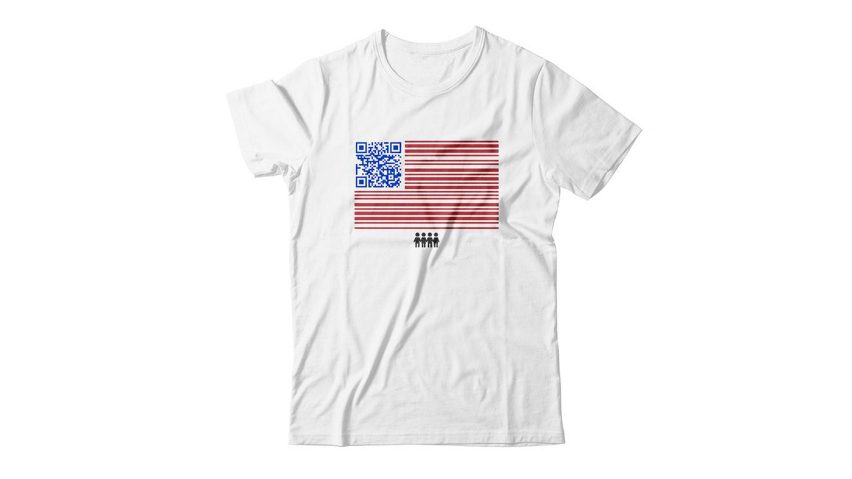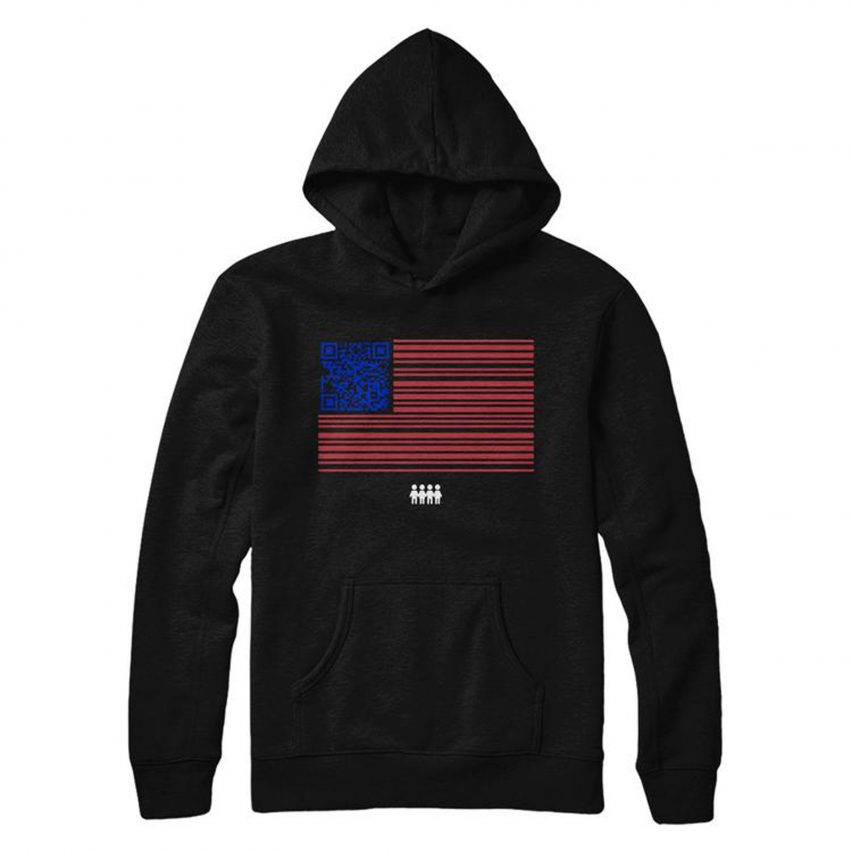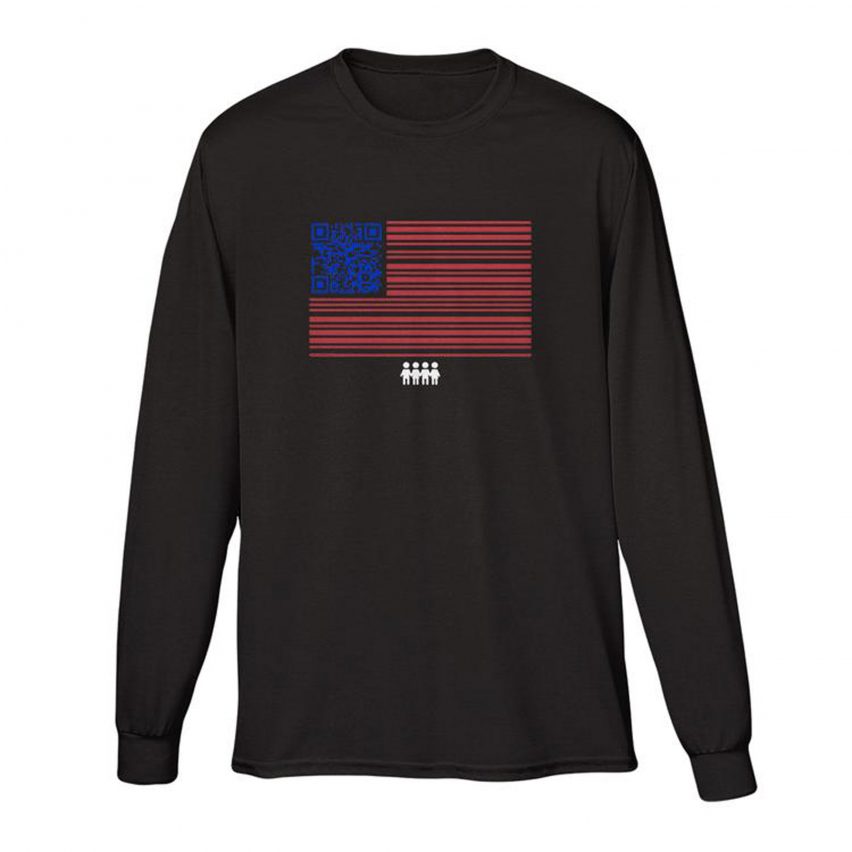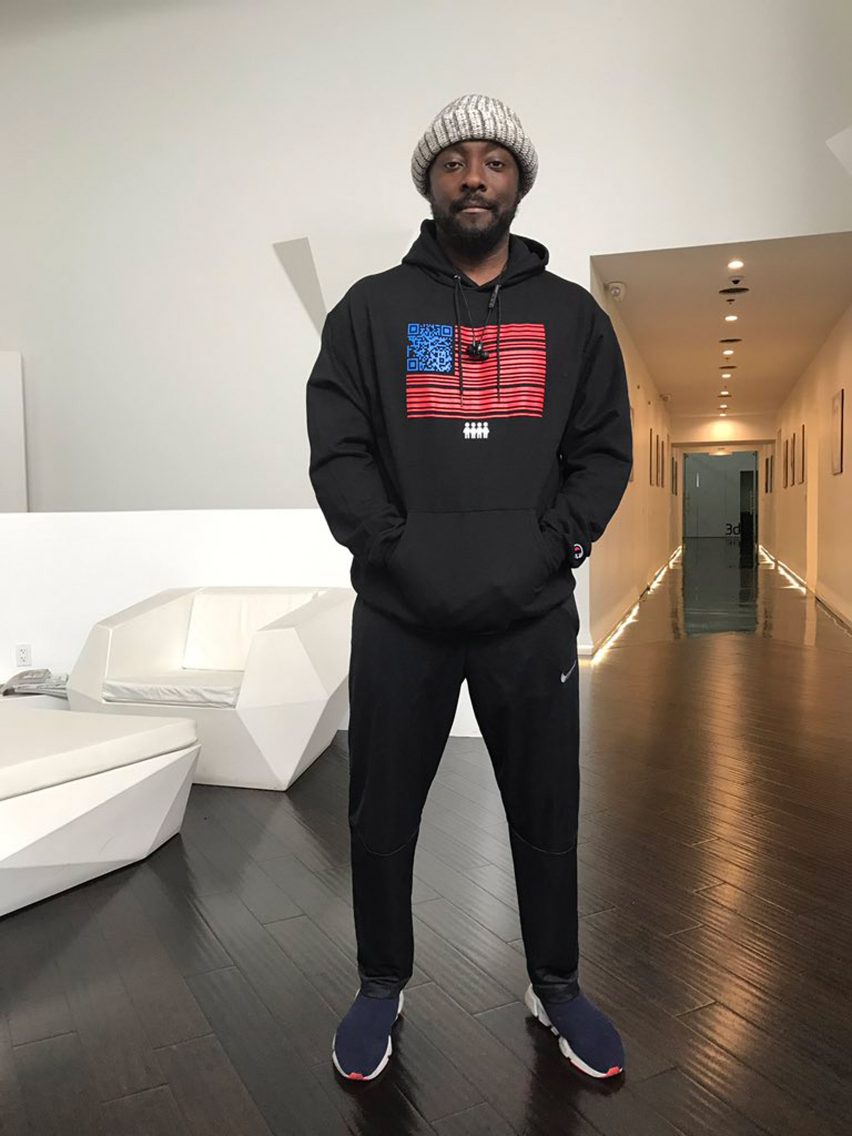
Parkland students design clothes with QR codes to register voters
These T-shirts and hoodies by student-led protest group March For Our Lives are adorned with an American flag containing a QR code, which leads directly to online voter registration when scanned.
The merchandise allows smartphone users to scan the design, and register to vote in the November 2018 midterm elections.
Sales will also raise funds and awareness for the March For Our Lives campaign, created by a group of students of Marjory Stoneman Douglas High in Parkland, Florida.
The campaign, which supports tighter gun controls, follows a mass-shooting at the school on 14 February 2018 that killed 17.
Clothing launched to "mobilise young people" across the US
March For Our Lives creative director Jammal Lemy – a T-shirt designer and former Parkland student – hopes the apparel will encourage more votes among young people, seen as a key demographic in swinging the upcoming elections.
The group intends to rally these young voters to elect lawmakers that will pass stricter gun legislation – a hugely divisive topic in the US.
"We needed to figure out how to mobilise young people across this country," Lemy told Dezeen. "We needed a shirt that would help personify what our message was."

The QR codes on the front of the T-shirts, sweatshirts and hoodies provide direct links to online registration sites – accessible to voters in 38 of America's 50 states.
The blue code – a type of barcode that can be read by a digital scanner – forms the top left portion of the American flag, in place of the stars. The flag's usual 13 red stripes are also multiplied and rejigged into varying thickness to resemble the linear barcodes found on shopping items.
Design draws on tactics used by advocates for gun rights
Lemy settled on the flag design after looking to tactics used by the National Rifle Association (NRA) – a powerful organisation that advocates for gun rights in the US, which has managed to garner major support in recent campaigns. He said the similarity is intended highlight the differences in its campaign.
"We realised the NRA builds an identity for their followers, they build a sense of community, the idea that they are really super patriotic and that patriotism is their thing," Lemy said.
"For us, as an organisation, we're patriotic too, we believe in the political system of this country," he added. "We said we have to take patriotism back, because that's not what they're selling."
Lemy said the idea to add technology to the clothing came about accidentally. He was working concurrently on advertorials featuring QR codes and T-shirt graphics of American flags, so decided to merge the two.
So far, it has been reported that 10,000 people have registered to vote using the clothing.

Part of the success of the shirts – which have been sported by musician Will.i.am – is that many are so intrigued by how they work, according to Lemy. "Everyone pulls their phone out to see what it does," he said.
Prices range from $44.99 (£34.95) for hoodies and $29.99 (£23.29) for long-sleeved shirts to $24.99 (£19.41) for the short-sleeved tees.
All are available to purchase in either black or white from March For Our Lives' website, alongside other merchandise that includes a "Gun Free Zone" cap, and totes and bandanas.
March For Our Lives among wave of responses to US school shootings
An alarming amount of shootings have taken place in US schools in recent years, with 30 incidents in which someone was injured already in 2018.
In response, American designer Shepard Fairey produced a pair of posters protesting gun violence in US schools for the series of nationwide protests that took place in March following the Parkland shooting.

The American Institute of Architects (AIA) has also responded to the increased violence, revealing plans for a series of initiatives that will use "the power of design" to help address violence in US schools, and create safer environments for children.
But Lemy argues that architects and designers should be "proactive rather than reactive". He called for them to think about ways to improve the lifestyles in underprivileged communities, which could help to reduce gun violence.
"When it comes to reducing violence in schools and public places, it's about actually first finding a method," he said. "The reality is not about making schools safer, but about finding the root cause and it's why is it so easy to bring a gun into school or public settings."
"One of the main things in reducing violence everywhere, is finding the root of the problem, not about building fortresses," he continued. "I think what designers can do is build more opportunities for young people in their environment, so that they can find an outlet and be productive."